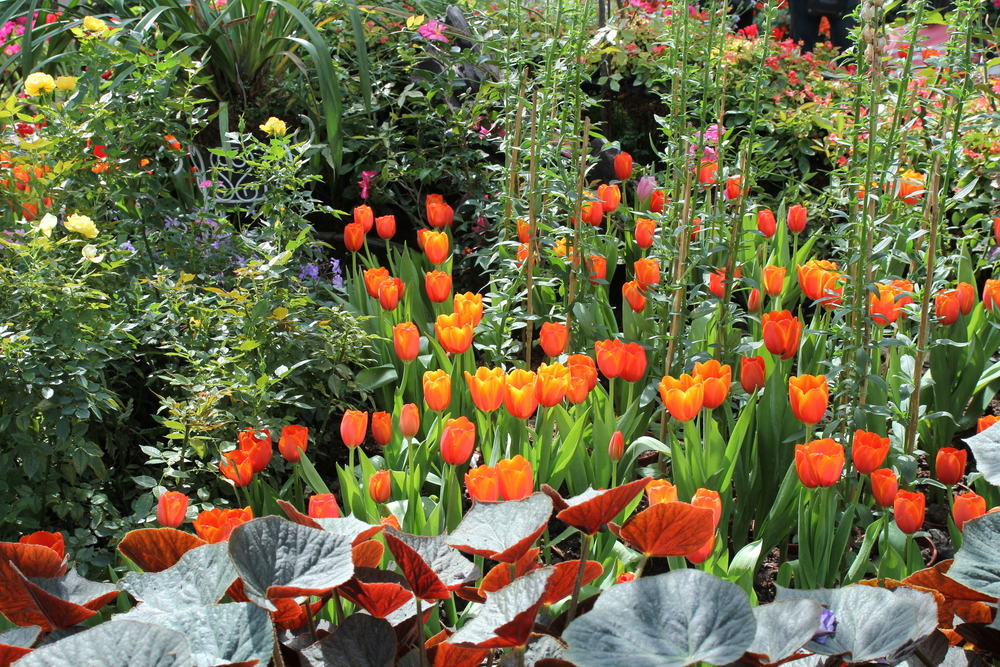Tulips are a stunning addition to any outdoor space, their bright colours enhance any garden whether they’re planted in pots or straight into the ground and they’re relatively easy to nurture and grow.
If you’ve been considering introducing these attractive bulbs to your garden, then here’s everything you need to know and how to get the best out of your tulip plants:

Planting Tulip Bulbs image courtesy of Shutterstock
When to plant
Tulips should be planted mid to late Autumn, so around October/November time. This is to help reduce the possibility of disease, as the colder climate kills off any viral or fungal diseases. It’s a good idea to check your tulip bulbs for signs of damage or mould, if these are planted they will not grow.
Reflowering bulbs
Bedding type tulips are unlikely to re-flower if they are left in the ground after their first year, which is why in the Spring when the heads have died you should lift the bulbs from the ground and dry them before storing for later in the year. It’s still not guaranteed that these old bulbs will flower, so they are perhaps left for the back of the flower bed.
Garden blogger Sarah Raven recommends planting tulips much deeper, as this means they are less likely to reproduce and therefore flower the year after. She also suggests attempting the ‘bulb lasagne’ technique when it comes to planting in pots, planting the bigger and latest flowering bulbs at the bottom and the smaller, earlier ones near the top. This means you can enjoy a range of flowers over a stretch of a few months close to the start of the year, with tulips coming out last to wave goodbye to spring.
Types of tulip
Tulips are available in a wide range of sizes and species, and suppliers such as Bakker feature a huge range of varieties to mix and match in your outdoor space. Whether you opt for a Gothic vibe with the Black Parrot tulip or embrace the colours of the rainbow with a myriad of Burning Hearts and Prinses Irene, it’s about choosing what works in your space and ensuring you get your timings right.

Image of Tulips in garden courtesy of Shutterstock
Preventing pests and disease
Bulbs are prone to contracting diseases or being dug up by pests looking for a snack – here are the ones to watch out for:
- Aphids – These tiny bugs love tulip bulbs and spread disease between plants.
- Slugs – The classic garden pest likes to chew on tulip plant leaves.
- Grey squirrels – Keep a close eye on your flower bed after planting, squirrels like to dig up bulbs to eat later.
Digging your tulips deeper in the ground and using environmentally friendly pesticide on them will ensure they are saved from destruction before they’ve flowered. As well as pests, watch out for these signs of disease:
- Brown spots on leaves – Could indicate that your tulips have tulip fire disease.
- Streaked, distorted leaves and flowers – This is one of the main indicators of a tulip virus and you should avoid planting any bulbs in the infected area for up to five years.


14 July 2016
Thanks for such good planting tips!